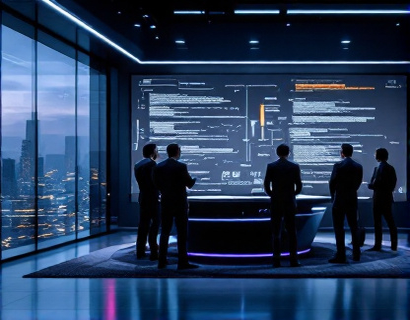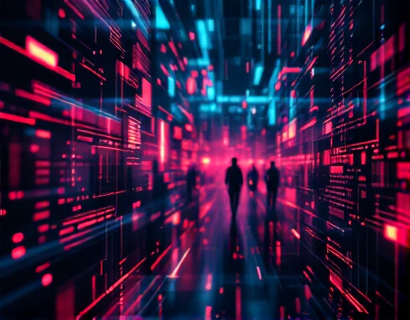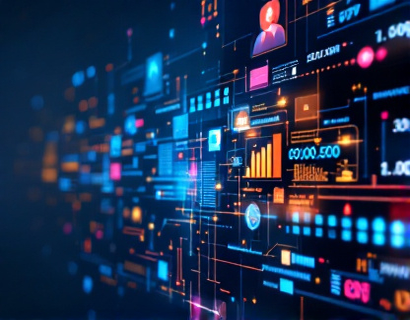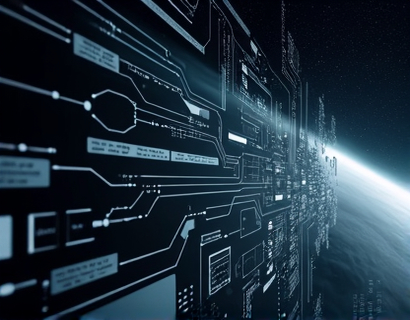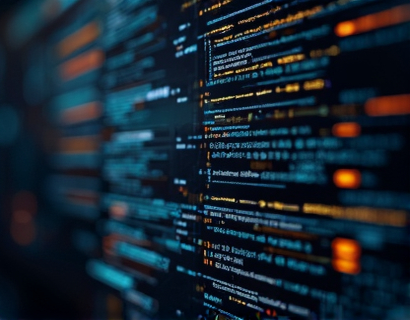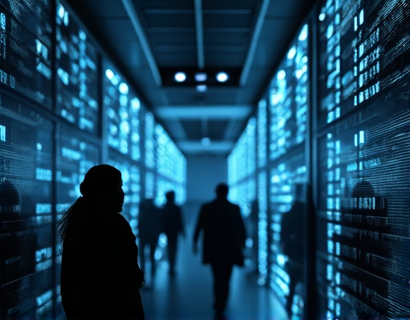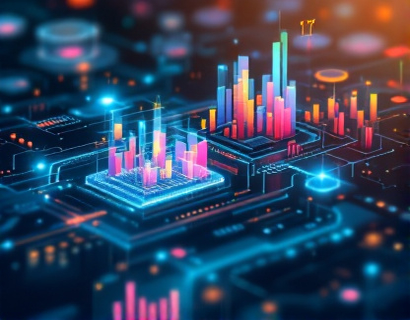The Synergy of Crypto and AI: Revolutionizing Ucosystem Applications for the Next Generation
The intersection of cryptocurrency and artificial intelligence (AI) is giving birth to a new era of technological advancements, fundamentally transforming the way we interact with digital applications and services. This fusion, often referred to as techfusion, is creating innovative solutions that leverage the strengths of both domains, offering unprecedented opportunities for users and developers alike. As we delve into this transformative space, it's essential to understand how these technologies complement each other and the profound impact they are having on various sectors.
Understanding Cryptocurrency and AI
Cryptocurrency, since its inception with Bitcoin in 2009, has evolved from a niche digital currency to a robust ecosystem encompassing various assets, smart contracts, and decentralized applications (dApps). The underlying blockchain technology ensures transparency, security, and decentralization, making it an ideal foundation for trustless and transparent transactions. On the other hand, AI, with its ability to process vast amounts of data, learn from patterns, and make decisions with minimal human intervention, has become a cornerstone of modern technology. When combined, these technologies can create powerful tools that enhance efficiency, security, and user experience.
The Synergy of Crypto and AI
The synergy between cryptocurrency and AI is multifaceted, with each technology enhancing the capabilities of the other. One of the primary areas where this synergy is evident is in the development of decentralized AI models. Traditional AI systems rely on centralized data repositories and computational resources, which can be vulnerable to security breaches and censorship. By leveraging blockchain, AI models can be decentralized, ensuring data privacy and integrity while enabling more robust and resilient systems.
Another significant aspect of this synergy is the use of cryptocurrencies as a medium of exchange for AI-related services and transactions. Smart contracts on blockchain platforms can automate and enforce agreements between parties, reducing the need for intermediaries and lowering transaction costs. This not only accelerates the development and deployment of AI applications but also makes them more accessible to a broader audience.
Decentralized AI Marketplaces
One of the most exciting applications of the crypto-AI synergy is the emergence of decentralized AI marketplaces. These platforms allow developers and researchers to buy, sell, and trade AI models, data sets, and computational resources in a trustless environment. For instance, a developer needing a specific AI model for a project can purchase it directly from the creator using cryptocurrency, without the need for a central authority to facilitate the transaction. This not only democratizes access to advanced AI tools but also fosters a vibrant ecosystem of innovation and collaboration.
Platforms like OpenMined and SingularityNET are leading the way in this space. OpenMined provides a decentralized infrastructure for AI, enabling users to train and deploy models on a distributed network while maintaining control over their data. SingularityNET, on the other hand, creates a marketplace for AI services, allowing users to request and provide AI computations using a native cryptocurrency called AGI coins. These platforms are redefining how AI resources are shared and monetized, paving the way for a more inclusive and dynamic AI ecosystem.
Enhanced Data Security and Privacy
The integration of AI and blockchain technology significantly enhances data security and privacy. Blockchain's immutable and transparent nature ensures that data transactions are tamper-proof and auditable, while AI can be used to detect and prevent unauthorized access or anomalies in real-time. For example, AI-powered security systems can analyze patterns in blockchain transactions to identify potential threats and automate responses, providing a robust defense against cyber attacks.
Moreover, AI can help in anonymizing and encrypting sensitive data before it is stored on the blockchain, ensuring that user privacy is maintained. This is particularly crucial in industries such as healthcare and finance, where data sensitivity is paramount. By combining the security features of blockchain with the analytical capabilities of AI, organizations can achieve a higher level of data protection and compliance with regulatory standards.
Optimized Resource Allocation
The computational demands of AI models, especially those involving deep learning and large datasets, require significant computational power and energy. Decentralized AI platforms powered by blockchain can optimize resource allocation by dynamically distributing computational tasks across a network of nodes. This not only reduces the load on individual devices but also makes efficient use of available resources, lowering energy consumption and costs.
For instance, a decentralized AI training platform can allocate computational tasks to nodes based on their current capacity and availability, ensuring that resources are used efficiently. This approach not only accelerates the training process but also promotes a more sustainable use of computational resources. Additionally, the use of cryptocurrencies as a reward mechanism for contributing computational power incentivizes participation and fosters a collaborative community.
Tokenization of AI Assets
The tokenization of AI assets is another transformative aspect of the crypto-AI synergy. By representing AI models, data sets, and computational resources as tokens on blockchain platforms, these assets can be easily traded, licensed, and monetized. This opens up new revenue streams for creators and developers, allowing them to monetize their intellectual property in a transparent and secure manner.
For example, a developer can tokenize a proprietary AI model and sell fractions of it to multiple buyers, each receiving a unique token representing a portion of the model's usage rights. This not only democratizes access to advanced AI tools but also creates a new market for AI assets. Tokenization also facilitates the creation of decentralized autonomous organizations (DAOs) focused on AI research and development, where community members can contribute resources and decision-making power through token ownership.
Challenges and Considerations
While the potential of the crypto-AI synergy is vast, there are several challenges and considerations that need to be addressed. One of the primary concerns is the scalability of blockchain networks, which can struggle to handle the high volume of transactions required for decentralized AI applications. Solutions such as layer 2 protocols and sharding are being developed to address this issue, but they require further refinement and adoption.
Another challenge is the regulatory landscape, which is still evolving in both the crypto and AI domains. Ensuring compliance with data protection laws, anti-money laundering regulations, and other legal requirements is crucial for the sustainable growth of decentralized AI platforms. Collaboration between regulators, developers, and industry stakeholders is essential to create a balanced and supportive environment.
Additionally, the technical complexity of integrating blockchain and AI technologies poses a barrier for many developers. Education and community support are vital in overcoming this challenge, as more resources and tools become available to help developers build and deploy decentralized AI applications.
Future Prospects
The future of the crypto-AI synergy is promising, with numerous potential applications across various industries. In the realm of finance, decentralized AI-driven trading platforms can provide more accurate predictions and automated trading strategies, enhancing market efficiency and investor decision-making. In healthcare, AI models trained on decentralized and secure data repositories can lead to more personalized and effective treatment plans.
In the field of education, AI-powered adaptive learning platforms can be enhanced with blockchain-based credentialing systems, ensuring the authenticity and portability of educational achievements. The combination of these technologies can revolutionize how we learn and acquire new skills, making education more accessible and tailored to individual needs.
Furthermore, the integration of AI and blockchain in the Internet of Things (IoT) can lead to smarter and more secure connected devices. AI can optimize the performance and energy consumption of IoT devices, while blockchain can ensure secure and transparent data exchange between devices and the cloud. This synergy can pave the way for a more intelligent and interconnected world.
Conclusion
The fusion of cryptocurrency and artificial intelligence is ushering in a new era of technological innovation, transforming the way we interact with digital applications and services. By leveraging the strengths of both domains, we can create more secure, efficient, and user-friendly solutions that cater to the needs of the next generation. As this synergy continues to evolve, it is crucial for developers, researchers, and policymakers to collaborate and address the challenges ahead, ensuring that the benefits of this techfusion are realized across all sectors of society.




